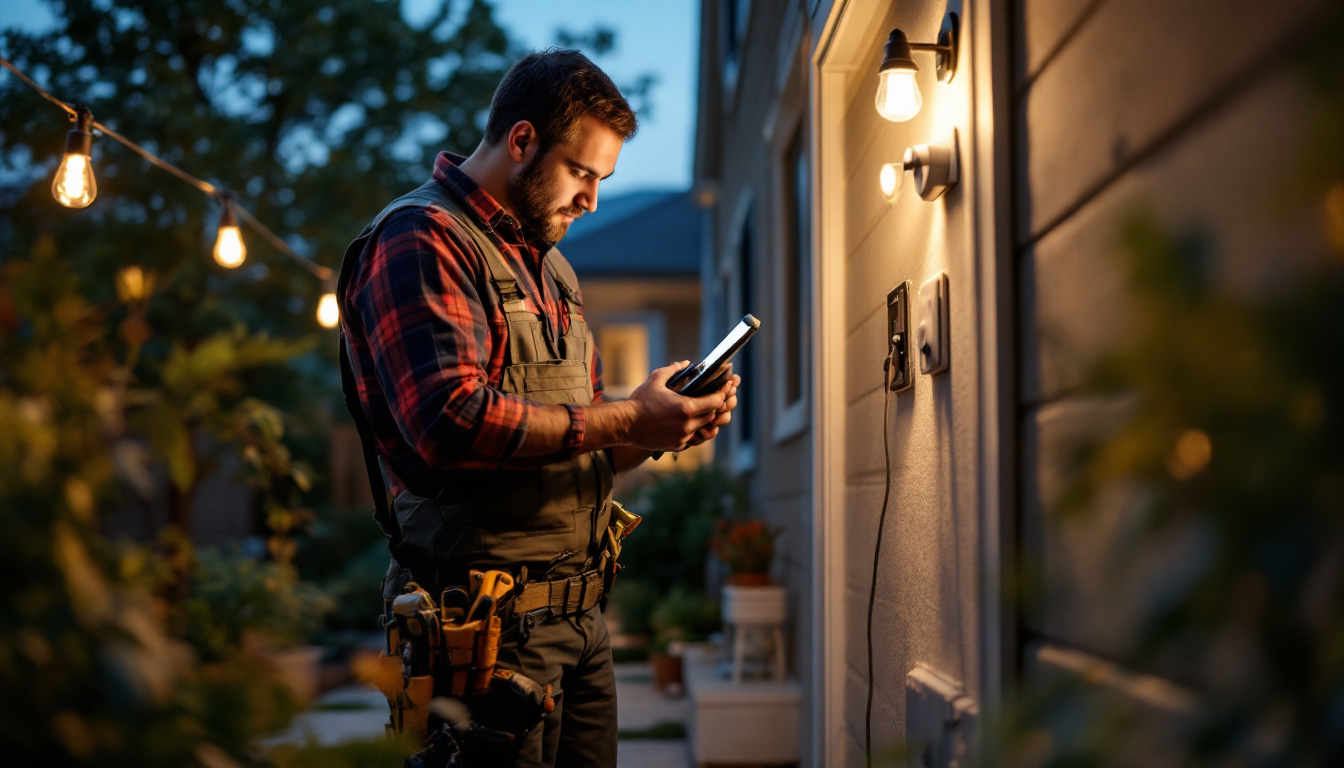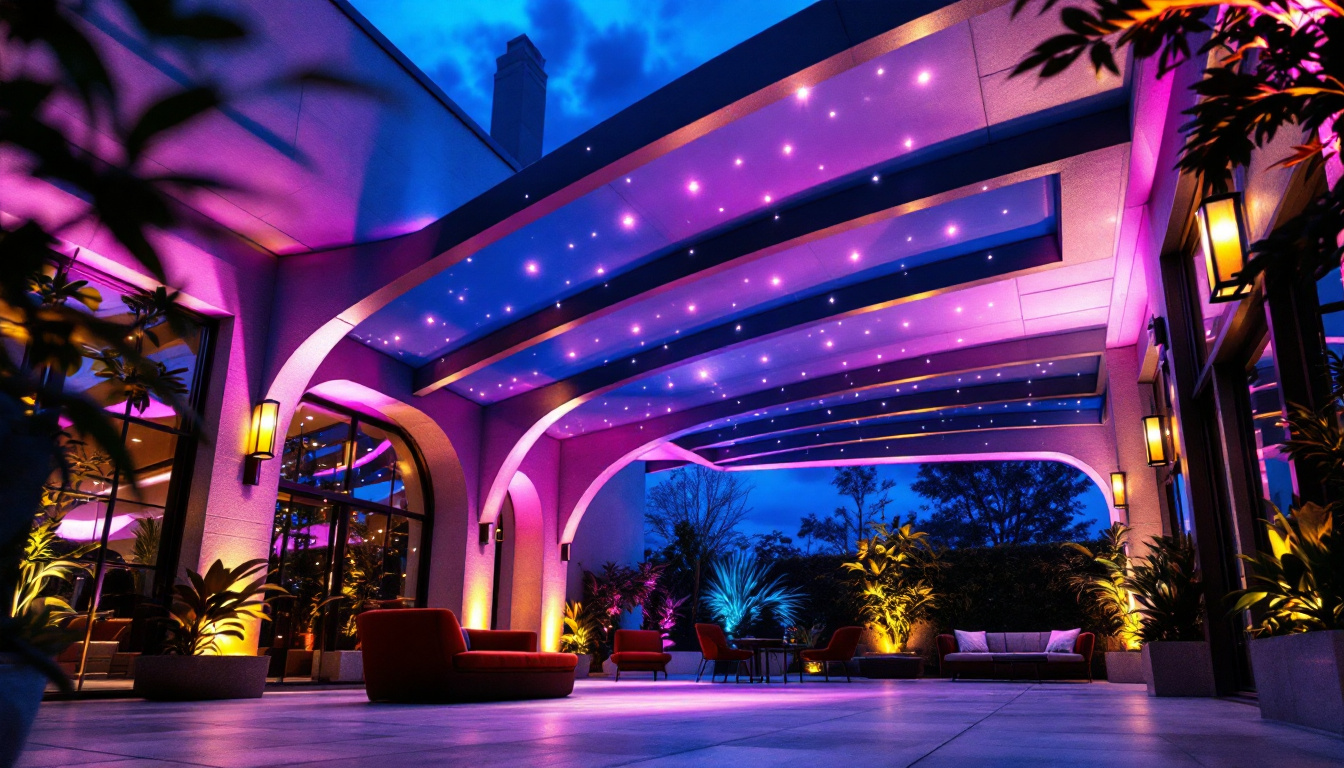

In the ever-evolving field of lighting design and installation, motion lights have emerged as a popular solution for both residential and commercial settings. These innovative lighting systems offer convenience, energy efficiency, and enhanced security. However, for lighting contractors, the installation and maintenance of motion lights come with a unique set of challenges. Understanding these challenges is crucial for delivering quality service and ensuring customer satisfaction.
Motion lights utilize various sensor technologies to detect movement and activate lighting. Common types include passive infrared (PIR), microwave, and dual technology sensors. Each type has its advantages and disadvantages, which can complicate the selection process for contractors.
PIR sensors are the most widely used due to their reliability and cost-effectiveness. They detect heat emitted by moving objects, making them ideal for outdoor applications. However, they can be less effective in areas with fluctuating temperatures or in situations where the sensor’s field of view is obstructed. Additionally, PIR sensors typically have a limited range, which means they may not cover large areas unless multiple units are installed.
Microwave sensors, on the other hand, emit microwave pulses and can detect movement through obstacles. This makes them suitable for complex environments. However, they can be more expensive and may lead to false triggers due to their sensitivity. Their ability to cover larger areas and detect even the slightest movement can be advantageous in busy commercial settings, where security is a priority. Understanding the specific needs of the installation site can help determine whether the sensitivity of microwave sensors is a benefit or a drawback.
Choosing the right sensor type is just the beginning. Installation requires careful consideration of placement, angle, and height to maximize effectiveness. A poorly placed sensor can result in inadequate coverage or unnecessary activation, leading to customer dissatisfaction. For instance, placing a sensor too low may cause it to be triggered by small animals, while positioning it too high could prevent it from detecting human movement effectively. Therefore, it is essential to conduct a site survey to identify optimal locations for sensor installation.
Contractors must also factor in environmental elements, such as wind and rain, which can affect sensor performance. This requires a thorough understanding of the specific site conditions and the behavior of the motion sensors being installed. Moreover, the presence of nearby foliage can obstruct the sensor’s line of sight, making it crucial to consider seasonal changes in vegetation. Additionally, the integration of motion sensors with existing lighting systems and smart home technology can enhance functionality, allowing for features such as remote access and programmable settings that adapt to user preferences. This technological synergy not only improves user experience but also contributes to energy efficiency by ensuring lights are only activated when necessary.
As smart home technology continues to gain traction, integrating motion lights with existing systems has become a common request from clients. This integration can enhance functionality but also presents several challenges for contractors.
Not all motion lights are designed to work seamlessly with every smart home system. Contractors must ensure compatibility between the motion lights and the home automation systems in place. This often requires extensive research and a solid understanding of both systems.
Additionally, contractors may encounter challenges when integrating motion lights with security systems. Ensuring that the motion lights activate in conjunction with alarms or cameras can be complex, especially in older homes where wiring and technology may not align. In such cases, contractors may need to retrofit wiring or even recommend upgrades to the existing infrastructure to facilitate a smoother integration. This can involve additional costs and time, which must be communicated clearly to clients to manage expectations effectively.
Once compatibility is established, programming the motion lights to function as desired can be a daunting task. Clients often want customized settings, such as specific activation zones or sensitivity levels. Achieving this requires a deep understanding of the technology and may involve trial and error during the installation process.
Contractors must also educate clients on how to adjust settings after installation, ensuring they can modify the system as their needs change. This ongoing support is crucial for maintaining a positive client relationship. Furthermore, as smart home technology evolves, clients may wish to incorporate new features or devices in the future. Therefore, contractors should provide guidance on potential upgrades and how to keep the system current, which can enhance the longevity and effectiveness of the integration. This proactive approach not only helps clients feel empowered but also positions contractors as knowledgeable partners in their smart home journey.
With a growing emphasis on energy efficiency and sustainability, motion lights are often marketed as eco-friendly solutions. However, contractors face challenges in communicating these benefits to clients and ensuring that installations align with energy-saving goals. The shift towards sustainable practices is not just a trend; it’s becoming a necessity as communities strive to reduce their carbon footprints and embrace renewable energy sources.
Many clients may not fully understand how motion lights contribute to energy savings. Contractors need to effectively communicate the advantages, such as reduced energy consumption when lights are only activated during movement. This education can help clients appreciate the long-term benefits of their investment. For instance, by utilizing motion sensors, clients can significantly decrease their electricity bills while also extending the lifespan of their lighting fixtures, as they are not left on unnecessarily. Furthermore, discussing the environmental impact of reduced energy usage can resonate with clients who are environmentally conscious, making them more likely to embrace these technologies.
Additionally, contractors must stay informed about the latest energy-efficient technologies and products. This knowledge enables them to recommend the best options for their clients, ensuring that installations meet sustainability goals. Engaging clients in discussions about the latest advancements, such as smart home integration and solar-powered motion lights, can enhance their understanding and excitement about energy-efficient solutions. By showcasing case studies or testimonials from previous installations, contractors can illustrate the tangible benefits of motion lights, fostering trust and encouraging clients to make informed decisions.
As energy efficiency standards evolve, contractors must navigate a complex landscape of regulations and codes. Ensuring that motion light installations comply with local and national guidelines can be challenging, especially for those who may not be familiar with the latest requirements. The importance of compliance extends beyond legal obligations; it also reflects a contractor’s commitment to quality and professionalism, which can significantly influence their reputation in the industry.
Staying updated on these regulations is essential for avoiding potential fines and ensuring client satisfaction. This may require ongoing education and training, adding another layer of complexity to the contractor’s role. Many contractors find value in joining professional organizations or attending workshops that focus on energy efficiency and regulatory changes. Networking with peers can also provide insights into best practices and innovative solutions, further enhancing their ability to deliver compliant and efficient installations. Moreover, as municipalities increasingly adopt stricter energy codes, contractors who proactively adapt to these changes can position themselves as leaders in the market, attracting clients who prioritize sustainability and compliance.
Once motion lights are installed, ongoing maintenance and troubleshooting become critical aspects of the contractor’s responsibilities. Clients expect their systems to function flawlessly, and any issues can lead to dissatisfaction and potential loss of business.
Motion lights can experience various issues, such as false triggers, failure to activate, or inconsistent performance. Identifying the root cause of these problems can be challenging, especially when multiple factors are at play, such as environmental conditions or sensor malfunctions.
Contractors must be prepared to address these issues promptly and effectively. This may involve revisiting the installation site, re-evaluating sensor placement, or replacing faulty components. A proactive approach to maintenance can help prevent larger issues down the line.
Maintaining open lines of communication with clients is essential for successful maintenance. Contractors should provide clear instructions on how clients can troubleshoot minor issues themselves, as well as when to call for professional assistance. This not only empowers clients but also builds trust in the contractor’s expertise.
Regular follow-ups can also enhance client satisfaction. By checking in on the performance of the motion lights, contractors can address any concerns before they escalate, reinforcing their commitment to quality service.
The lighting industry is highly competitive, and contractors must find ways to differentiate themselves from others offering similar services. This challenge is particularly pronounced in the motion lighting sector, where many contractors may offer comparable products and solutions.
To stand out in a crowded market, contractors should focus on building a strong brand identity. This includes developing a clear value proposition that highlights unique services, such as specialized expertise in motion lighting installations or exceptional customer service.
Investing in marketing efforts, such as a professional website, social media presence, and customer testimonials, can also enhance visibility and attract potential clients. A well-defined brand can help contractors establish themselves as leaders in the motion lighting niche.
The lighting industry is constantly evolving, with new technologies and trends emerging regularly. Contractors must commit to continuous learning and adaptation to stay relevant. This may involve attending industry conferences, participating in training programs, or engaging with online resources.
By staying informed about the latest advancements in motion lighting technology and installation techniques, contractors can offer cutting-edge solutions that meet client needs while maintaining a competitive edge.
Motion lights present a range of challenges for lighting contractors, from understanding sensor technology to ensuring regulatory compliance and maintaining client satisfaction. By addressing these challenges head-on and committing to ongoing education, contractors can position themselves as trusted experts in the field.
Ultimately, the successful installation and maintenance of motion lights require a combination of technical knowledge, effective communication, and a customer-centric approach. As the demand for motion lighting continues to grow, contractors who navigate these challenges effectively will not only enhance their service offerings but also build lasting relationships with their clients.
Ready to overcome the challenges of motion lighting installations and elevate your projects? Look no further than LumenWholesale for all your lighting needs. We provide contractors with top-quality, spec-grade motion lights at unbeatable wholesale prices. Our extensive selection is designed to meet the highest industry standards, ensuring reliability and high performance for every installation. Plus, with free shipping on bulk orders, you can stock up on premium lighting solutions without worrying about hidden fees or compromises. Don’t let the complexities of motion lighting hold you back. Wholesale Lighting at the Best Value is just a click away. Choose LumenWholesale for quality, affordability, and convenience, and make your next lighting project a shining success.

Discover essential tips and expert advice for lighting contractors on selecting and installing LED canopy lights.

Discover essential insights into light fixtures that every lighting contractor should know.

Explore the key qualities that distinguish top lighting contractors in the industry, as exemplified by Leviton Manufacturing Company.

Discover the essential resources lighting contractors rely on to master the art of light switch installation and design.
Get notified when NEW deals are released.
Optimize your budget with wholesale discounts.
Only top-quality, specification-grade lighting products.
No additional costs at checkout - what you see is what you pay.
We understand the unique needs of contractors.